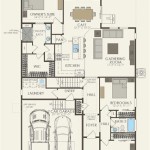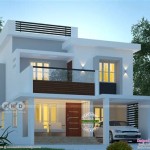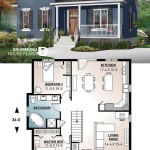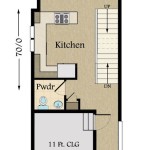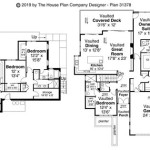Home Plans Estimated Cost to Build: A Comprehensive Guide
Embarking on the journey of building a new home is a significant undertaking, often representing a substantial financial investment. Understanding the estimated cost to build from home plans is paramount for successful project planning and execution. This involves navigating a complex landscape of expenses, from initial design and permitting to material procurement and labor costs. This article provides a comprehensive overview of the factors influencing the estimated cost to build, offering insights into how to develop a realistic budget and avoid common pitfalls.
The estimated cost to build is more than just a simple sum of readily available figures. It's a dynamic calculation that must account for numerous variables, reflecting local market conditions, design complexities, and the quality of materials and finishes selected. A detailed and accurate estimate is crucial not only for securing financing but also for making informed decisions throughout the construction process, ensuring the project remains within budget and meets expectations.
Initial estimations often begin with a cost-per-square-foot calculation. While this provides a general benchmark, it's important to recognize its limitations. This simple metric doesn’t account for the nuances of design, site conditions, or the specific materials chosen. Relying solely on a cost-per-square-foot estimate can lead to significant discrepancies between the initial budget and the final cost of construction. Therefore, a more detailed and comprehensive approach is necessary for developing a realistic and reliable estimate.
Key Point 1: Factors Influencing the Estimated Cost
Several key factors directly impact the estimated cost to build a home. These factors can be broadly categorized into design considerations, site characteristics, material choices, and labor costs. Understanding how each of these elements contributes to the overall budget is crucial for effective cost management.
Design Complexity: The complexity of the architectural design plays a significant role in determining the cost. Intricate designs with unconventional shapes, multiple angles, and custom features will inevitably be more expensive to build than simpler, more straightforward designs. Features such as vaulted ceilings, extensive window arrays, and custom millwork demand specialized labor and materials, increasing the overall cost.
Site Conditions: The characteristics of the building site can significantly impact construction costs. Sites with sloping terrain, unstable soil, or the presence of underground utilities require additional site preparation work, such as excavation, grading, and retaining walls. Environmental regulations and the need for specialized foundation systems can also add to the expense.
Material Selection: The choice of materials has a direct and substantial impact on the estimated cost. High-end materials, such as imported marble, custom cabinetry, and premium roofing, will significantly increase the budget. Opting for more affordable alternatives, such as engineered wood flooring, stock cabinets, and standard roofing materials, can help to reduce costs without compromising quality. The selection of energy-efficient materials, while potentially more expensive upfront, can offer long-term savings on utility bills.
Labor Costs: Labor costs represent a significant portion of the overall construction budget. These costs vary depending on the location, the skill level of the tradespeople, and the demand for their services. Areas with a high cost of living or a shortage of skilled labor will typically have higher labor rates. Obtaining multiple bids from qualified contractors is essential to ensure competitive pricing and to select a contractor with the experience and expertise required for the project.
Permitting and Fees: Building permits and associated fees are also a necessary expense. These fees vary depending on the local jurisdiction and the scope of the project. It's essential to factor in the cost of permits and inspections to avoid unexpected expenses later in the construction process.
Key Point 2: Developing a Detailed Budget
Creating a detailed budget is a critical step in managing the estimated cost to build a home. A well-structured budget provides a clear roadmap for tracking expenses and identifying potential cost overruns. This process involves breaking down the project into individual line items and assigning realistic cost estimates to each.
Line-Item Breakdown: The budget should include a comprehensive list of all anticipated expenses, categorized into specific line items such as site preparation, foundation, framing, roofing, plumbing, electrical, HVAC, insulation, drywall, flooring, cabinetry, appliances, landscaping, and contingencies. Each line item should be further detailed, specifying the quantity of materials, labor hours, and unit costs.
Obtaining Bids: Obtaining multiple bids from subcontractors and suppliers is essential for developing accurate cost estimates. Requesting detailed bids that specify the scope of work, materials to be used, and the labor rate will allow for effective comparison and negotiation. It is important to verify the credentials and insurance coverage of all subcontractors before awarding contracts.
Contingency Planning: A contingency fund is an essential component of any construction budget. Unexpected issues, such as unforeseen site conditions, material price increases, or design changes, can arise during the construction process. A contingency fund of at least 5-10% of the total budget should be set aside to cover these unforeseen expenses.
Tracking Expenses: Implementing a system for tracking expenses is crucial for monitoring the budget and identifying potential cost overruns. This can be done using spreadsheets, project management software, or a dedicated accounting system. Regularly comparing actual expenses to the budgeted amounts will allow for timely adjustments and corrective actions.
Regular Review and Updates: The budget should be reviewed and updated regularly throughout the construction process. As the project progresses, more accurate cost information will become available, allowing for refinements to the budget. Regular communication with the contractor and subcontractors is essential for identifying and addressing any potential cost issues.
Key Point 3: Strategies for Cost Optimization
While maintaining the desired quality and aesthetic, various strategies can be employed to optimize the estimated cost to build a home. These strategies involve careful planning, informed decision-making, and a willingness to explore alternative solutions.
Value Engineering: Value engineering involves analyzing the design and construction methods to identify opportunities for cost reduction without compromising functionality or aesthetics. This may involve simplifying the design, using alternative materials, or modifying construction techniques.
Material Sourcing: Sourcing materials strategically can significantly reduce costs. This may involve purchasing materials in bulk, negotiating discounts with suppliers, or exploring alternative sources for materials. Consider sourcing materials directly from manufacturers or wholesalers to eliminate markups from intermediaries.
Energy Efficiency: Investing in energy-efficient materials and systems can reduce long-term operating costs. Energy-efficient windows, insulation, and HVAC systems can significantly lower utility bills, providing a return on investment over time. Explore available tax credits and rebates for energy-efficient upgrades.
Phased Construction: Phased construction involves breaking the project into smaller, more manageable phases. This allows for greater control over costs and scheduling. It can also provide an opportunity to make design changes or adjustments as the project progresses.
Owner Participation: Depending on skills and experience, homeowners can participate in certain aspects of the construction process to reduce labor costs. This may involve tasks such as painting, landscaping, or interior finishing. However, it is essential to ensure that the homeowner has the necessary skills and knowledge to perform these tasks safely and effectively.
Regular Communication and Collaboration: Maintaining open communication and collaboration with the contractor, architect, and other stakeholders is crucial for effective cost management. This allows for early identification of potential cost issues and the development of creative solutions. Regular meetings and progress updates can help to keep the project on track and within budget.
Ultimately, the estimated cost to build a home is a dynamic and multifaceted calculation that requires careful planning, diligent monitoring, and a proactive approach to cost management. By understanding the key factors influencing cost, developing a detailed budget, and implementing strategies for cost optimization, homeowners can successfully navigate the construction process and realize their dream home within a reasonable budget.

Estimated Cost To Build Report Information House Plans And More

House Plans With Cost To Build The Plan Collection

New Home Construction Costs By The Numbers Cost Building A House
How Much Does It Cost To Build A 30 X Sq Ft House Quora

Home Cost Estimate Fhp

Affordable House Plans With Estimated Cost To Build 500 Modern N

Birch Haven House Plan 24438

Floor Plans For Tiny Houses Besting A Frames Cabins Sheds Craft Mart

Cost To Build A House Everything You Need Know Forbes Home

Pebble Creek House Plan Archival Designs

